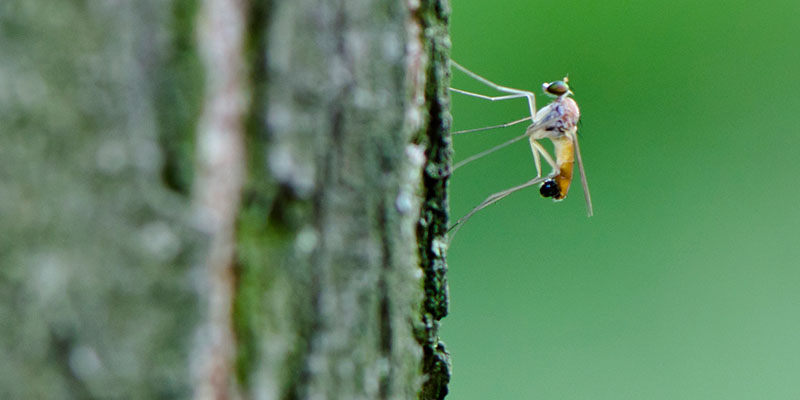Mosquito Bite Prevention for Travelers

Mosquitoes spread many types of viruses and parasites that can cause diseases like chikungunya, dengue, Zika, and malaria. If you are traveling to an area where malaria is found, talk to your healthcare provider about malaria prevention medication that may be available.
Protect yourself and your family from mosquito bites. Here’s how:
Keep mosquitoes out of your hotel room or lodging.
- Choose a hotel or lodging with air conditioning or screens on windows and doors.
- Sleep under a mosquito bed net if you are outside or in a room that is not well screened. Mosquitoes can live indoors and will bite at any time, day or night.
- Buy a bed net at a local outdoor store or online before traveling overseas.
- Choose a WHOPES-approved bed net (like Parmax*): compact, white, rectangular, with 156 holes per square inch, and long enough to tuck under the mattress.
- Permethrin-treated bed nets provide more protection than untreated nets.
- Permethrin is an insecticide that kills mosquitoes and other insects.
- Do not wash bed nets or expose them to sunlight. This will break down the insecticide more quickly.
- Get more information on bed nets from the CDC here.
You can reduce your chance of getting infected by avoiding mosquito bites.
Cover up!
- Wear long-sleeved shirts and long pants.
- Mosquitoes may bite through thin clothing. Treat clothes with permethrin or another Environmental Protection Agency (EPA)-registered insecticide for extra protection.
If you are traveling with a baby or child:
- Always follow instructions when applying insect repellent to children.
- Do not use insect repellent on babies younger than two months of age.
- Instead, dress infants or small children in clothing that covers arms and legs, or cover the crib, stroller and baby carrier with mosquito netting.
- Adults: Spray insect repellent onto your hands and then apply to a child’s face. Do not apply insect repellent to a child’s hands, mouth, cut or irritated skin.
Treat clothing and gear
- Use permethrin to treat clothing and gear (such as boots, pants, socks, tents), or purchase permethrin-treated clothing and gear. Read product information to find out how long the protection will last.
- If treating items yourself, always follow the product instructions.
- Do not use permethrin products directly on skin.
What to know about insect repellent:
Use only an EPA-registered insect repellent
- Consider bringing insect repellent with you.
- Always follow the product label instructions.
- Reapply insect repellent every few hours.
- Do not spray repellent on the skin under clothing.
- If you are also using sunscreen, apply sunscreen first and insect repellent second.
- Read more about repellents, from the EPA.
Natural insect repellents not registered with EPA
- In the United States, the EPA has not evaluated for effectiveness most of the commonly known natural insect repellents.
- Examples of ingredients used in unregistered insect repellents include: citronella oil, cedar oil, geranium oil, peppermint and peppermint oil, pure oil of lemon eucalyptus, soybean oil.
- CDC recommends that you use an insect repellent containing an active ingredient shown to be both safe and effective.
Use an insect repellent with one of the following active ingredients:
| Active Ingredient Higher percentages of active ingredient provide longer protection | Some brand name examples* (Insect repellents may be sold under different brand names overseas.) |
|---|---|
| DEET | Off!, Cutter, Sawyer, Ultrathon |
| Picaridin, also known as KBR 3023, Bayrepel, and icaridin | Skin So Soft Bug Guard Plus, Autan (outside the United States) |
| Oil of lemon eucalyptus (OLE) or para-menthane-diol (PMD) | Repel |
| IR3535 | Skin So Soft Bug Guard Plus Expedition, Skin Smart |
*The use of commercial names is to provide information about products; it does not represent an endorsement of these products by Great American, the Centers for Disease Control and Prevention or the U.S. Department of Health and Human Services.
For more information, please visit: CDC: Avoid Mosquito Bites
The information in this Data Guide is from the Centers for Disease Control and Prevention (CDC).









